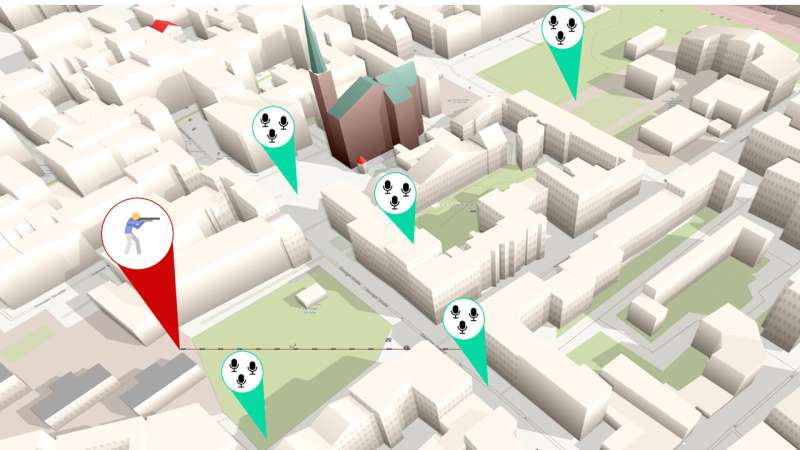Luisa Still, of Sensor Data and Information Fusion, will discuss the important factors in determining shooter localization accuracy at the 182nd ASA Meeting. Credit: Luisa Still
During a gunshot, two sound events occur: the muzzle blast and the supersonic shock wave. Acoustic sensors, such as arrays of microphones, can capture these sounds and use them to approximate the location of a shooter.
As part of the 182nd Meeting of the Acoustical Society of America at the Sheraton Denver Downtown Hotel, Luisa Still, of Sensor Data and Information Fusion, will discuss the important factors in determining shooter localization accuracy. Her presentation, "Prediction of shooter localization accuracy in an urban environment," will take place May 23 at 12:45 p.m. Eastern U.S.
In an urban setting, buildings or other obstacles can reflect, refract, and absorb sound waves. The combination of these effects can severely impact the accuracy of shooter localization. Preemptively predicting this accuracy is crucial for mission planning in urban environments, because it can inform the necessary number of sensors and their requirements and positions.
Still and her team used geometric considerations to model acoustic sensor measurements. This modeling, combined with information on sensor characteristics, the sensor-to-shooter geometry, and the urban environment, allowed them to calculate a prediction of localization accuracy.
"In our approach, the prediction can be interpreted as an ellipse-shaped area around the true shooter location," said Still. "The smaller the ellipse-shaped area, the higher the expected localization accuracy."
The group compared their accuracy prediction to experimental performance under various geometries, weapons, and sensor types. The localization accuracy depended significantly on the sensor-to-shooter geometry and the shooting direction with respect to the sensor network. The smaller the distance between the shooting line and a sensor, the more accurate they could be with their prediction of the source. Adding more sensors increased the accuracy but had diminishing returns after a certain point.
"Each urban environment is too individual (e.g., in terms of layout, building types, vegetation) to make a general recommendation for a sensor set up," said Still. "This is where our research comes in. We can use our approach to recommend the best possible setup with the highest accuracy for a given location or area."
More information: acousticalsociety.org/asa-meetings/
Provided by Acoustical Society of America
























